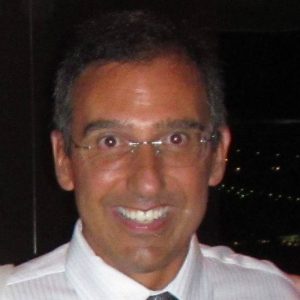 The Helmoltz-Zentrum Berlin, leading research centre for structure of matter, assigned the Innovation Award on Synchrotron Radiation to Luca Giannessi, researcher at INFN-LNF, Carlo Callegari, Kevin Prince and Giuseppe Sansone for their pioneering achievements in the development and application of innovative investigation methods exploiting the radiation emitted by a seeded free electron laser.
The Helmoltz-Zentrum Berlin, leading research centre for structure of matter, assigned the Innovation Award on Synchrotron Radiation to Luca Giannessi, researcher at INFN-LNF, Carlo Callegari, Kevin Prince and Giuseppe Sansone for their pioneering achievements in the development and application of innovative investigation methods exploiting the radiation emitted by a seeded free electron laser.
The award was given for demonstrating the possibility to coherent control experiment in EUV range using a seeded free electron laser and using a synthesis of different coherent harmonics to generate ultrashort pulses, in the order of attoseconds.
These important results has been achieved in the framework of the FERMI project at Elettra facility (Trieste). FERMI has been for a long time unique among the seeded free electron laser sources currently operating in the ultraviolet and soft x-ray range worldwide. FERMI opened unique opportunities for exploring the structure of matter using a variety of diffraction, scattering and spectroscopy techniques thanks to the flexibility enabled by different operation modes.
In the near future, a free electron laser source will be available at LNF thanks to the advanced techniques in plasma acceleration and X-band acceleration techonogy. This source, complementary to FERMI, will expand the national landscape of available instruments for the research in photonics.
The award ceremony took place during this year’s Helmholtz-Zentrum Berlin user meeting on 10 December 2020 as an online event.
“I am honored to receive this award together with my colleagues – says Luca Giannessi – I want to emphasize that the award has to be considered as a recognition for the all FERMI team activities and in particular the coherent control collaboration born at the Low Density Matter beamline and coordinated by Carlo Callegari“.
Dr. Luca Giannessi made his first experiences on free electron lasers (FELs) during the thesis and later on the Mark III Stanford FEL in 1988, studying the harmonic generation process in FELs. He made a remarkable experience in the field of FELs, both theory and experiments, as staff scientist at ENEA Frascati. He collaborated with several European and worldwide teams contributing to the first lasing of Delta (Dortmund), of the Elettra SR FEL (European storage ring FEL). He coordinated the FEL physics of the SPARC single pass FEL amplifier test facility in Frascati, where first lasing was achieved in 2009. He participated to the commissioning of FERMI FEL-1 in 2010 and 2011. Head of machine physics at FERMI (since 2012), he coordinated the commissioning team during the first lasing of FERMI FEL-2, the first externally seeded soft-X ray FEL based on the fresh-bunch injection technique. In recognition of his contributions to the science of FELs, he also received the FEL prize award in 2013. He is now the head of machine at FERMI and responsible of the FEL working area of the Eupraxia project.
The Innovation Award on Synchrotron Radiation is sponsored by SPECS GmbH and BESTEC GmbH.
1) Kevin C. Prince et al., Coherent control with a short-wavelength Free Electron Laser. Nature Photonics 02/2016; 10(3):176-179., DOI:10.1038/nphoton.2016.13
2) E Maroju, P.K., Grazioli, C., Di Fraia, M. et al. Attosecond pulse shaping using a seeded free-electron laser. Nature 578, 386–391 (2020). https://doi.org/10.1038/s41586-020-2005-6
 INFN-LNF Laboratori Nazionali di Frascati
INFN-LNF Laboratori Nazionali di Frascati